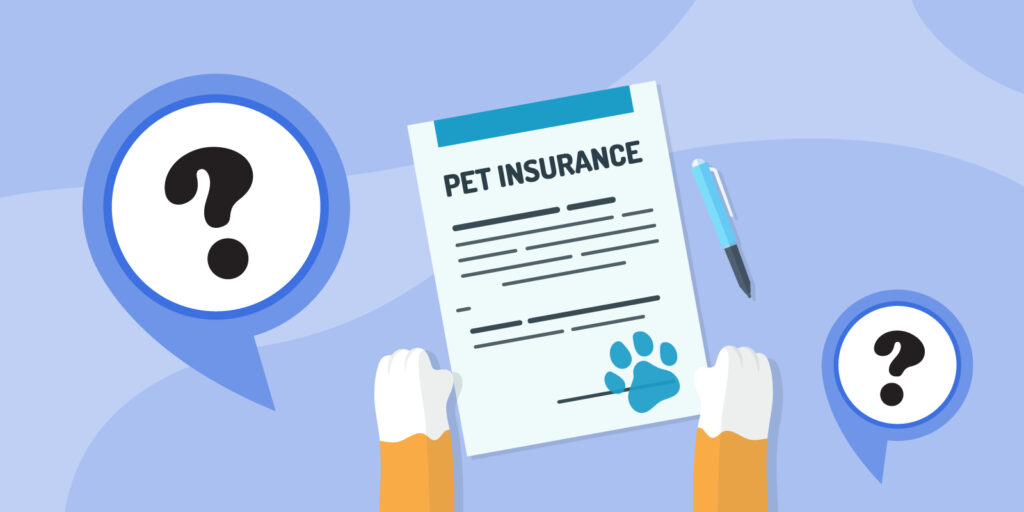Pets snuggle up with us when we’re sick and entertain us with their antics, making them an important part of the family. If you just got a new cat or dog, one of the first things you should do is look into pet insurance. Getting a policy in place now could make it easier to pay your pet’s medical expenses later on. However, like human insurance policies, not everything is covered. Here is everything you need to know about pet insurance, including what it covers and why it’s so important.
What Is Pet Insurance?
Pet insurance is similar to health insurance for humans. It covers a portion of your pet’s veterinary expenses, leaving more money in your pocket for other things. Before purchasing a pet insurance policy, it’s important to understand what’s covered and what isn’t.
What Does Pet Insurance Cover?
While every policy is different, here are some things you should expect your pet policy to cover.
Illnesses and Injuries
Pet insurance covers a wide range of illnesses and injuries, including arthritis, cancer, and problems with the digestive system. Depending on the terms of your policy, pet insurance may cover expenses associated with diagnosing, treating and monitoring these conditions. For example, if your dog breaks a bone, your insurance policy may cover X-rays, casting and other services necessary to treat the break and ensure the bone heals properly.
Congenital Conditions
A congenital condition is a health problem that’s present at birth. Some congenital conditions are diagnosed right away. For example, if a puppy is born with a limb deformity, it’s easy to see the deformity and seek care from a veterinarian. In some cases, however, it’s not immediately obvious that a pet has a congenital abnormality. The condition is sometimes not diagnosed until later in the pet’s life, leaving you with unexpected veterinary expenses.
Not all insurance companies include congenital conditions in their standard coverage, so you may need to purchase an add-on to ensure that any congenital conditions are covered.
Diagnosis and Treatment of Behavioral Issues
Some pets have behavioral health issues that affect the way they interact with people or respond to their environments. Excessive licking, food aggression, and destructive chewing are just a few possible symptoms of a behavioral health concern. Your pet insurance policy may cover the diagnosis and treatment of these conditions, helping your pet feel more comfortable. You’ll need to read your policy documents carefully, however, as you may need to purchase an add-on for this type of coverage as well.
Alternative Therapies
Some insurance companies offer add-ons that cover acupuncture, laser therapy, chiropractic care, and other alternative therapies. These treatments are used alone or in combination with traditional veterinary care to ease your pet’s symptoms. Typically, pet insurance only covers alternative therapies that are used to treat a covered condition. If the condition isn’t normally covered by your policy, then it’s possible a claim for alternative therapies may get denied.
Prescription Foods and Medications
Like humans, many pets need to take medication or follow special diets to stay healthy. Your pet insurance policy may cover prescription medications, prescription foods, and/or supplements, defraying your out-of-pocket costs. For example, if your cat develops kidney disease, pet insurance may cover part of the cost of buying a lower-protein food designed to support kidney health.
Chronic Diseases
Many pets develop heart disease, kidney disease, hyperthyroidism and other chronic health conditions. With the right pet insurance policy, you can get reimbursed for many of the expenses associated with treating and monitoring these chronic diseases.
Microchipping
If you’re worried about your pet getting lost, give yourself extra peace of mind by making sure it has a microchip. Microchipping makes it easier for veterinarians and rescue organizations to locate a pet’s owner. Although the device is tiny, you need to implant it in a pet for it to work as intended. Some insurance companies reimburse policyholders for the cost of the implantation procedure.
What Isn’t Covered by Pet Insurance?

Like all insurance policies, there are a few things that aren’t covered.
Preventive Care
In most cases, preventive care isn’t included in a basic pet insurance policy. Unless you purchase an add-on, you’ll have to cover the cost of wellness exams, vaccinations, heartworm prevention, and other preventive services on your own.
Cosmetic Services
Pet insurance doesn’t cover services performed for purely cosmetic reasons. This includes declawing, ear cropping, and tail docking.
Pre-Existing Conditions
A pre-existing condition is a health condition that exists before you enroll in an insurance plan or before the initial waiting period expires. If your pet shows symptoms of a health condition, that’s often enough to prevent the condition from being covered by your insurance policy, even if your veterinarian never makes an official diagnosis. Your insurance company may review your pet’s medical records before issuing a policy to determine if there are any pre-existing conditions it won’t cover.
Frequently Asked Questions
Here are answers to some of the most common pet insurance questions.
How Much Does Pet Insurance Cost?
Pet insurance costs an average of $28 per month for cats and $35 per month for dogs. The cost of a policy depends on several factors, including the pet’s age and breed, how much coverage you purchase, and the amount of your deductible.
What Are Some Common Reasons for a Pet Insurance Company to Deny a Claim?
Just because your insurance may cover a certain condition, you may not qualify for help every time you file a claim.
Here are some common reasons why insurance companies deny pet-related claims:
- You didn’t have coverage when you incurred the expense.
- The service isn’t covered under the terms of your policy.
- Your pet has a pre-existing condition excluded from the policy.
- The claim is related to preventive care. Most insurance companies don’t pay for vaccinations, annual exams, and other routine services.
- Your pet hasn’t had certain preventive services.
- You use your pet for a commercial service, such as breeding or helping the police locate missing persons.
Do I Have to Pay a Deductible for Pet Insurance?
Most pet insurance policies have a deductible that you must pay before the insurance company begins reimbursing your expenses. The lower your deductible, the higher the premium.
Pet Insurance Provides Stability
Pet insurance is a great option for new or seasoned pet parents that want to support their pet through all of life’s challenges. From illnesses and injuries to prescription medicine and alternative treatments, a pet policy can provide the finances to help keep your special pet healthy. However, not every condition and injury is covered. Look closely at your policy to discover your policy’s exclusions.
You might also be interested in: Everything You Need to Know About Insuring Your Musical Instruments





